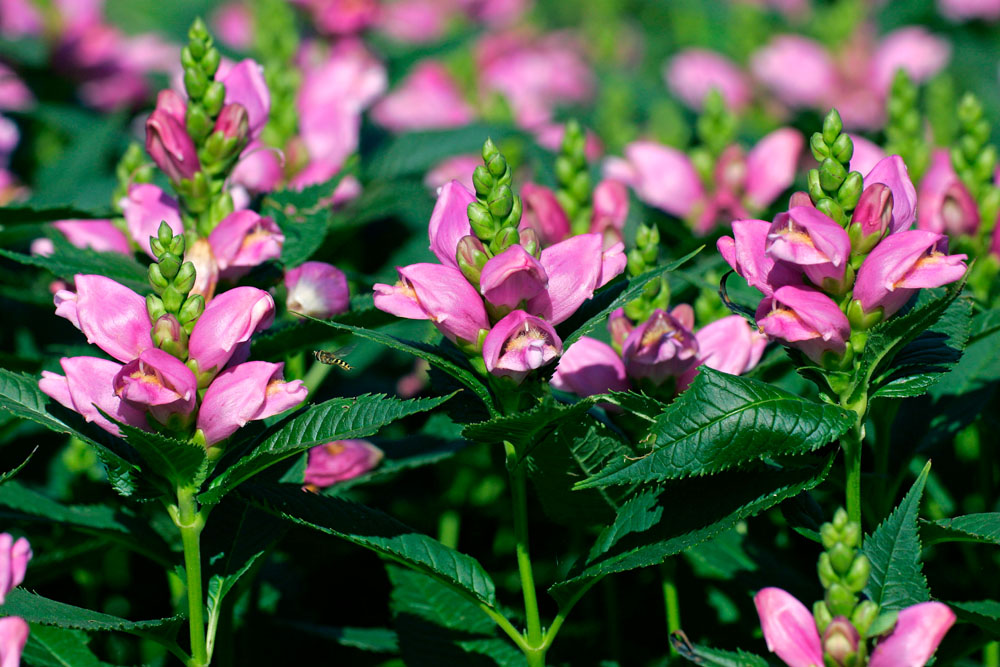Description
Chelone – Turtlehead –
There are about 6 species of perennials, in this genus. They occur from moist woodland, prairies, and mountains of North America. The name comes from the Greek word “kelone” meaning a tortoise or turtle, and refers to the hooded, gaping flowers. They are grown for strong growth and weather resistant flowers. Turtleheads have a stiff, upright habit and produce opposite pairs of simple, toothed, hairless, glossy leaves. The white, pink, or purple flowers, borne in short dense, terminal spike or racemes, from late summer to mid autumn, are tubular and 2 lipped, with a beard on the inside of each lower lip. They are showy plants for a late summer border.
Grow in deep, fertile, moist soil in an open site in partial shade or sun. Turtleheads tolerate heavy clay soil and will also grow in a bog garden. Mulch in mid spring with well rotted manure or compost. Divide in early spring.
Prone to powdery mildew, rust, fungal leaf spots, slugs and snails.
C. obliqua – This erect perennial from Central and Southeastern USA is the showiest of the turtleheads and grows 16-36″ tall and 12″ wide. From more rounded stems then other species it carries short stalked, broadly lance shaped to elliptic-lance shaped, toothed or incised, boldly veined, dark green leaves, 2-8″ long. In late summer and fall it bears dark pink or purple flowers, to 3/4″ long, with sparse yellow beards.
Zones 3-9





